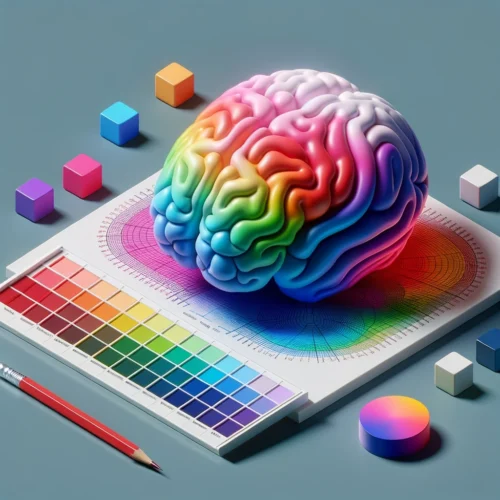The Psychology of Colour in Business: More Than Meets the Eye

Colour is everywhere. From the clothes we wear to the food we eat, colour impacts our decisions, emotions, and even our behaviour. In the world of business it’s more than just deciding which colours go well together or what looks appealing; it can influence consumer perceptions and drive purchase decisions.
Why Colour Matters in Business
Colour is more than just a visual stimulant; it communicates messages without words, evokes emotions, and sets the mood. Ever wondered why most fast-food chains use red in their logos? Or why luxury brands often opt for minimalist black and white designs?
It’s not by chance. Businesses use the psychology of colours to resonate with their target audience, establish brand identity, and convey their brand message.
Breaking Down the Colour Wheel
Let’s delve into what some popular colours signify and how businesses harness their power:
- Red: Evokes strong emotions, represents love, excitement, and urgency. It’s attention-grabbing and can even stimulate appetite. Perfect for clearance sales or food chains.
- Blue: Symbolises trust, dependability, and strength. It’s no surprise that corporate giants like Facebook, IBM, and Visa all sport blue logos.
- Yellow: Associated with happiness, warmth, and optimism. Brands use yellow to catch the eye and evoke cheerful feelings.
- Green: Represents health, tranquillity, and nature. It’s often used by organic or eco-friendly brands.
- Purple: Conveys luxury, royalty, and sophistication. Perfect for premium brands.
- Orange: A mix of red’s passion and yellow’s joy. It’s energetic, vibrant, and creative.
- Black: It’s sleek, modern, and luxurious. Many luxury brands use black to signify sophistication.
- White: Symbolises purity, simplicity, and cleanliness. It’s often used to convey a minimalist, modern vibe.
Colour and Conversion Rate
The psychology of colour doesn’t stop at branding. It plays a pivotal role in web design and user experience. A study found that adjusting the colour of a Call-to-Action (CTA) button boosted conversions by 21%. It’s essential to test and determine which colours resonate most with your audience, ensuring they align with your brand’s message and evoke the desired action.
Cultural Nuances and Colour
While colour psychology provides a general framework, it’s crucial to remember that interpretations can vary across cultures. For instance, while white represents purity in Western cultures, it’s a colour of mourning in many Eastern cultures. Always research and consider the cultural implications of colours, especially if you’re targeting a global audience.
In Conclusion
The relationship between colour and psychology in business is influential, and immensely powerful. By understanding the nuances of different colours, businesses can create more impactful branding, design more effective websites, and forge deeper connections with their audience. So, next time you’re making a business decision related to colour, remember there’s a whole world of psychology just beneath the surface!





